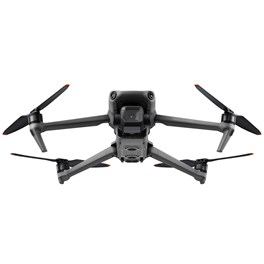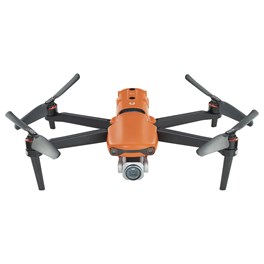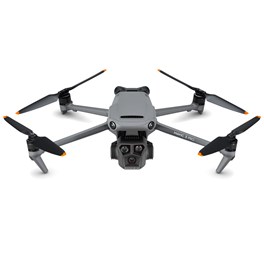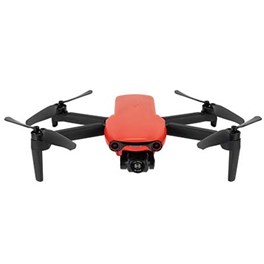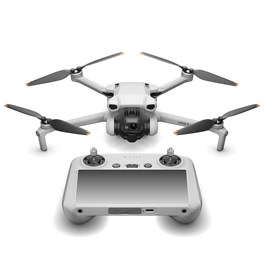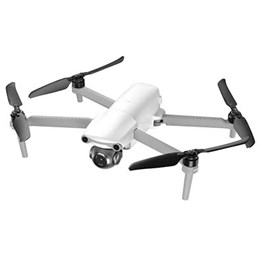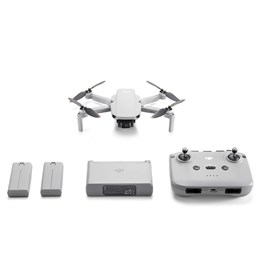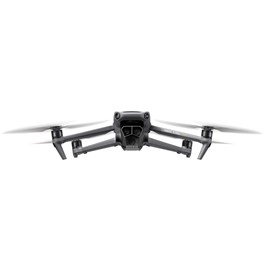
The best drones have forever changed the game when it comes to aerial photography and video. Long gone are the days when you had to charter a helicopter to get skyborne shots – now, it’s the work of moments to send a little quadcopter up into the air and capture what unfolds. These days, drone-shot images regularly find their way into photography competitions, and drones have been wholeheartedly embraced by the filmmaking industry.
If you want to get hold of a drone yourself, it’s easier than ever, as there are plenty of choices out there. DJI is undoubtedly the market leader, producing a huge range of drones from lightweight beginner models to highly specialised premium tools for filmmakers. However, we’ve also seen a number of innovative drones from rival firm Autel, with innovative features that make them well worth considering.
Some key features to look for in a drone are as follows:
Weight - This is hugely important for a drone, naturally, as it’s going to be spending its time in the air. However, there’s a legal component too, as the rules you have to follow when flying are different depending on whether a drone weighs more or less than 250g (this is why you see a lot of drones weighing around the 249g mark). You can check out the full Civil Aviation Authority drone guidelines here.
Other than the legalities, there are reasons to consider the weight of the drone you buy. Lighter ones are more portable and easier to carry, while heavier ones tend to be more stable and able to withstand high winds.
Sensor size - Just as with regular cameras, the size of a sensor in a drone’s camera affects the quality and in particular the dynamic range of the images it produces. Cheaper, smaller drones tend to use sensors around the 1/1.3-inch or 1/2.3-inch mark. As you slide up the scale, you start to see larger 1-inch sensors, and top-end drones for broadcast like the DJI Inspire series sport full-frame chips.
Automatic flight features - As drones are getting more sophisticated, many are acquiring features designed to take a bit of the work out of flying – and protect themselves from harm. Many modern drones have automatic obstacle avoidance sensors that mean they can prevent themselves from slamming into trees, lampposts and so forth. Automatic “Return to Home” functionality when battery life gets low is also common, preventing the drone from getting lost. Some drones can also track and follow subjects, and automatically execute complex flight manoeuvres around them.
There’s plenty more to say, but we’ve delayed long enough already – so let’s take a look at some of the best drones you can buy in 2024…
Quick Navigation
Best Drone for Photography
Drone photography is one of the most exciting disciplines to be in right now. While drones have their uses in a number of disciplines, they excel particularly in landscape photography, and nowadays it’s very common to see more than a few drone shots on the shortlists for competitions like Landscape Photographer of the Year. We’ve always appreciated the drone shots that have been submitted in our community competitions, as they always deliver a striking perspective and something truly different.
We’ve picked out a few different options for this section – as well as one of DJI’s latest drones, we have a budget-friendly choice for those who have less to spend, and a terrific drone from Autel with powerful night-time shooting modes. Whichever you choose, you’ll be ideally equipped to capture stunning airborne imagery – and we hope to see your efforts in one of our future competitions!
DJI Mavic 3 Classic
With a powerful Hasselblad camera and reliable flight performance, the DJI Mavic 3 Classic has all the hallmarks of the Mavic 3. Its 4/3 CMOS sensor delivers exceptional image quality and is capable of taking 20MP stills and 5.1K video. Omnidirectional Obstacle Sensing and Advanced RTH helps the drone to avoid obstacles and get back to you safely so you can focus on capturing stunning imagery.
£1,119.00 View
Pros:
- Terrific value for money
- Superb image quality and dynamic range
- Sophisticated safety features
Cons:
- No telephoto module
- On the heavy side for a drone
The DJI Mavic 3 Classic arrived in late 2022 to fill a notable gap in the broader drone line-up – the enthusiast’s model. More sophisticated than the mini drones but more affordable than the big professional models, it’s a tidy, capable quadcopter that produces fantastic imagery, and excels in particular for photographers.
The heart of the image-making setup here is a Hasselblad camera with a Four Thirds CMOS sensor – the same size sensor you’d find in an OM SYSTEM or Panasonic Lumix G mirrorless camera. With 20MP of resolution to play with, it’s capable of producing vivid and punchy images, full of colour and contrast. Its dynamic range is also excellent – DJI claims up to 12.8 stops – and as such, the Mavic 3 Classic is great in low light, particularly if you’re willing to work with RAW files in software to recover shadow detail.
Pros:
- Feather-light at 249g
- Great, punchy photos
- Uncomplicated to use
Cons:
- Will be buffeted by winds
- Not as tough as other drones
The DJI Mini Pro 3 provides a simpler, more affordable drone experience than many others on the market, but the important part is still taken care of – it takes fantastic images. The 1/1.3-inch CMOS sensor punches above its weight, with the option to shoot RAW and JPEG images at up to 48MP. ISO handling is really good all the way up to ISO 6400, so don’t be afraid to take the drone out when the light gets low for some atmospheric shots. The camera can also switch quickly between landscape and portrait orientations by rotating the gimbal 90°.
Check out our video review of the DJI Mini Pro 3.
If you’re something of a novice at aerial photography, you may want to try out the MasterShots, which allows you to nominate a subject, then stand back and watch as the Mini Pro 3 automatically executes a series of manoeuvres around it to quickly generate a sizzling video clip. It’s a great way to become familiar with what the drone can do.
Autel EVO II Pro Rugged Bundle V3 - Orange
Whilst the drone provides superb image quality and clever flight features, the Autel EVO II Pro Rugged Bundle V3 comes with essential accessories that make shooting easier than ever. The 1-inch CMOS sensor takes 20MP stills and 6K video, and records stunning nighttime imagery thanks to Moonlight Algorithm 2.0. With the Smart Controller SE and battery packs, flying and shooting is made effortless.
£2,149.00 View
Pros:
- High-quality 1-inch CMOS sensor
- Powerful night-time shooting modes
- 12-bit DNG RAW
Cons:
- App/software not as polished as DJI’s
For high-end photo quality, Autel’s EVO II Pro drone is an excellent choice. With a 1-inch CMOS sensor, it’s capable of capturing 20MP images – plenty of resolution for most purposes – and can do so in 12-bit DNG format, resulting in incredibly vivid colour rendition.
It especially comes into its own in low light thanks to a feature that Autel calls “Moonlight Algorithm 2.0”. This is really just a fancy term for a Night Mode – but thanks to its f/2.8 maximum aperture, ISO ceiling of 44,000 and HDR capabilities, the EVO II Pro has quite a few tricks up its sleeve when it comes to a night mode.
Flight-wise, the Autel EVO II Pro benefits from 19 groups of sensors that allow it to build a three-dimensional map of its surroundings for optimal flight-pathing. Thanks to SkyLink 2.0 video transmission, you can also fly the EVO II up to 15km away and still get a clear video feed.
Best Drone for Filmmaking
If you’ve watched basically any TV other than Bargain Hunt in the past few years, you’ll probably appreciate how drones have been embraced by the video industry. And you know what? There probably actually has been a drone shot in at least one episode of Bargain Hunt (we’re not going to watch them all to find out). Since high-quality drone footage is so accessible, it doesn’t require a huge budget. So, if you’re a scrappy filmmaker or video content creator who wants to introduce a little aerial spice into their repertoire, these are the drones for you.
Our list in this section includes brand new models from DJI, as well as a compelling alternative from Autel. We’ve kept our choices here relatively mid-budget – these are the drones that will get great video results without breaking the bank. If you’re looking for something more high-end, scroll down to find our section covering the best professional drones. Otherwise, read on!
DJI Mavic 3 Pro (RC)
Sporting three powerful lenses each with different focal lengths, the Mavic 3 Pro provides next-level imaging performance. It’s possible to shoot up to 5.1K and 4K/120fps video, and the Omnidirectional Obstacle Sensing helps keep your drone safe whilst you focus on shooting. With a 15km transmission range and a 43-minute maximum flight time, you can comfortably capture stunning footage.
£1,808.00 View
Pros:
- Three-lens setup delivers versatility
- 5.1K 50fps and 4K 120fps video
- 10-bit D-Log colour profile
Cons:
- Some resolutions are main camera only
A brand new DJI drone offering simply breathtaking camera quality, the DJI Mavic 3 Pro is the first drone to be built around three lens modules, giving you a huge degree of versatility when composing your shots. There’s the standard 4/3 Hasselblad 20MP camera module, which sports a 24mm equivalent lens. Then there’s also the 70mm equivalent tele module that can shoot at up to 48MP, and a 166mm equivalent module that manages a still-respectable 12MP.
Video-wise, it’s an absolute beast. Headline features include 5.1K resolution at up to 50fps, 4K at up to 120fps, and Full HD 1080p at a super-slow 200fps. The Mavic 3 Pro also offers the 10-bit D-Log colour profile, allowing it to capture up to a billion colours, and ensuring the optimal level of grading flexibility when it comes to post-production.
With sophisticated flight safety features like Omnidirectional Obstacle Sensing, the DJI Mavis 3 Pro is a filmmaking tool you can rely on.
Pros:
- Immersive FPV flying experience
- Very lightweight and compact
- Excellent value for money
Cons:
- Video resolution tops out at 4K 60p
- FPV goggles can be disorienting for some
The DJI Avata is an enticing option for filmmakers on a budget. It’s a high-quality video shooter, able to capture cinematic 4K video at up to 60fps, and with D-Cinelike colour mode (not a Log profile, but a reasonable approximation) for capturing as much detail as possible in highlights and shadows. However, the Avata’s headline trick is that it’s also an FPV drone.
FPV, for those who don’t know, stands for “first-person view”, and the Avata offers just that. Strap on the bundled DJI Goggles Integra and you can see exactly what your drone is seeing in crisp detail. The goggles have a refresh rate of 100Hz, and DJI’s O3+ video transmission means latency (i.e. lag) is as minimal as 30ms. With the DJI Motion 2 Controller in your hands, you can completely immerse yourself in getting the shot.
FPV flying isn’t for everyone. Just like with VR headsets, there will be some people who just don’t get on with it physically, so it’s something that’s worth trying out before you commit.
Autel EVO Nano+ Premium Bundle - Red
Compact and versatile, the Autel EVO Nano+ Premium Bundle – Red features smooth flying manoeuvres, 4K quality capturing, and long battery backup, all packed in a lightweight yet robust casing. Featuring multiple cinematic and dramatic modes, this compact drone can be utilised for a wide range of applications. Providing crisp image transmission is the Autel SkyLink transmission system.
£739.00 View
Pros:
- Weighs less than 250g
- Useful automated shooting modes
- Stabilised 4K 30p video
Cons:
- No 10-bit video (Log mode is 8-bit)
- DJI Mini 3 Pro arguably offers more features
For filmmakers who want a drone that slips beneath the 250g cut-off, we can happily recommend the Autel EVO Nano+. Thanks to its 3-axis gimbal, the Nano+ can produce smooth and cinematic footage with ease, and its Dynamic Track 2.1 system can follow not just human subjects, but also animals and vehicles (something not all of them can do).
The 50MP CMOS sensor in the Nano+ delivers 4K video in absolutely gorgeous quality. Sure, other drones have more resolution, but if you don’t need 6K or 8K (and you probably don’t) you’ll be delighted by the great look and crisp colours of the footage you get. There’s digital zoom functionality up to 16x as well – though you probably won’t want to venture beyond the mid-range in order to avoid compromising the quality too much. Obstacle avoidance features also make this one a good choice for less experienced pilots.
Best Drone for Travel
Drones are obviously fantastic things to have for travel, enabling you to get spectacular aerial shots of your far-flung destinations, and in most cases stowing down well enough to fit in an airline carry-on bag. However, you do have to be careful when travelling with a drone, as regulations differ from country to country, and you can’t necessarily rely on that sub-250g rule to protect you when you’re no longer in the UK. Make sure you do your research on your destination before you pack the drone.
Of course, you may not want a lightweight drone for travel – something a little more robust, something less likely to get snatched by a gust of wind, may be the order of the day. So, in this section we’ve included a couple of options: a truly lightweight drone that’s easy to take everywhere with you, and a more sophisticated option for those willing to trade portability for quality. After all, everyone travels differently!
DJI Mini 3 Fly More Combo (DJI RC)
Capturing advanced aerial shots is simple with the DJI Mini 3 thanks to a variety of intuitive controls, creative features, and failsafe functions. This compact and ultra-lightweight drone is not only capable of 4K HDR Video and True Vertical Shooting but also boasts an extended flight time of 38 minutes and comes equipped with the incredibly popular DJI RC and all Fly More accessories.
£679.00 View
Pros:
- Very light (248g)
- Vertical shooting for social media
- Smart Return to Home functionality
Cons:
- No obstacle avoidance
- No subject tracking
It’s a pretty simple drone, there’s no doubt about that, but if you want something small and agile to throw in your bag on your travels, the DJI Mini 3 will absolutely fit the bill. Sitting under 250g in weight, it nevertheless manages to include features like 38-minute flight times, 4K HDR video and a wide f/1.7 lens aperture. Like the Mini 3 Pro, it can shoot vertical video by physically rotating the camera module, meaning you won’t have to crop into footage if you’re shooting for TikTok or Instagram Reels.
It definitely lacks a few of the popular features you get on high-end drones. There’s no automated obstacle avoidance, for instance, and there also aren’t any of the popular tracking modes that enable a drone to follow a subject automatically. It just means you’ll have to get up to speed with piloting – happily, the premium remote control included in the Fly More combo makes this a breeze.
Autel EVO Lite+ Premium Bundle - Grey
Compact, versatile, and efficient, the Autel EVO Lite+ Premium Bundle promises uncompromised performance, even in the dark. This drone features a large 2.54 cm CMOS sensor that captures 20MP high-resolution images and 6K/30 videos. Its 3-axis gimbal produces sharp and smooth images, while the intelligent moonlight algorithm captures the detailing even if it is nighttime and the ISO is increased.
£1,299.00 View
Pros:
- Impressive battery life
- Steady even in high winds
- Does great at night
Cons:
- On the heavier side (despite the name)
Don’t let the name fool you – weighing in at 835g, the Autel EVO Lite+ is firmly in the mid-size category as far as drones go. This is by no means a bad thing, as the EVO Lite+ is capable of sturdily holding its own even when conditions get windy and letting the 3-axis gimbal do its work of getting you some smooth, steady video. It has a 1-inch CMOS sensor, and like other Autel drones, it benefits from the “Moonlight Algorithm” that maximises quality when shooting in low light.
As long as you don’t mind the weight, the Autel EVO Lite+ delivers the kind of shooting versatility that makes it a terrific choice for travel – where you have to be prepared for the unexpected. Its long battery life allows for 40-minute flight times, and it’s capable of automatically following subjects with Dynamic Track 2.1.
Best Drone for Beginners
If you’re someone who isn’t too au fait with the latest technology, it’s easy to assume that drone photography will be too complex for you. However, this really isn’t the case – drones are getting more user-friendly than ever, and there are plenty of great choices in the mid-range budget-wise that make for a wonderful starting point to learn the ropes.
Automated shooting modes can enable you to get spectacular shots, with automated tracking to hone in on your chosen subject, while obstacle avoidance can take a lot of the pressure off your piloting skills. While beginner-friendly drones won’t have quite the same level of depth and sophistication in their camera setups, the models we’ve picked here are still more than capable of obtaining spectacular imagery of the world below.
We’ve picked out a couple of drone options that offer an easy learning experience for novice pilots, while also providing room to grow. Even after you learn the ropes, you’ll get many hours of enjoyment out of these drones – not to mention plenty of spectacular images.
DJI Mini 2 SE Fly More Combo
Take to the skies with the DJI Mini 2 SE. This small but powerful drone is designed with ample intelligent features to deliver a seamless user experience for casual aerial photographers. Combined with an incredibly lightweight design at 249g and full optical flexibility from the 1/2.3-inch CMOS sensor with 12 effective megapixels, the DJI Mini 2 SE is well-equipped for your next aerial adventure.
£379.00 View
Pros:
- Weighs just 249g
- Half-hour flight times
- Can charge via USB-C
Cons:
- No obstacle avoidance features
- JPEG only; no RAW
Affordable, portable and easy to use – the DJI Mini 2 SE ticks all the boxes for those who are just starting their journey with aerial photography. With Auto Takeoff and automatic shooting modes, it’s designed to get you up and flying as soon as possible. The battery puts in a good shift, allowing the Mini 2 SE to fly for up to 30 minutes before needing a charge, and when it does you can juice it up via standard USB-C.
The DJI Mini 2 SE uses a 1/2.3-inch CMOS sensor – the kind you’d get in most smartphones – and sports a resolution of 12MP. So, while it’s not about to blow anyone away in terms of image quality, it does a solid job of the basics for beginners. There’s also video at up to 2.7K, for those who partake. Be aware that it doesn’t have the automatic obstacle avoidance tech of DJI’s more sophisticated drones – you’ll have to dodge things the old-fashioned way.
Pros:
- High-quality 1-inch sensor
- Intelligent autonomous flying modes
- Very quiet in operation
Cons:
- Non-adjustable aperture
- Too light for high winds
While it’s a little more expensive, the DJI Air 2S is definitely worth considering if you’ve got the budget. It’s essentially designed to be a drone for everyone – easy enough to use for novices to get to grips with, but offering high enough photo and video quality to satisfy experienced users. It’s built around a 1-inch sensor with 20MP of resolution, and its top-end video resolution is 5.4K at 30p, with the 10-bit Dlog-M colour profile that can record up to a billion colours.
Usinga fixed-aperture f/2.8 lens, the DJI Air 2S has a somewhat simpler camera setup than many of its contemporaries. The ND filters bundled in the Fly More combo are a way to get creative with shooting aesthetics, and make it easier to handle tricky lighting situations such as shooting directly into the light.
Best Professional Drone
Lastly, we’re picking out the best drones for filmmakers who need the ultimate in quality, responsiveness and control. With large sensors, big resolutions and professional codecs, these drones are designed to offer broadcast-quality video to those who need it.
There have been new arrivals on this particular scene, with DJI recently introducing both a dedicated cine version of its new triple-camera Mavic 3 Pro, and the latest model in its premium Inspire series, the DJI Inspire 3, with 8K video, a full frame sensor and DJI’s DL lens mount.
Naturally, these drones are priced at the point where no one but a professional is realistically going to be looking at them. But with navigation and tracking that are second to none, these models represent the next generation of aerial videography, and even if you’re not in the market, you’ve got to admire the craftsmanship on display here.
DJI Mavic 3 Pro Cine Premium Combo
The DJI Mavic 3 Pro Cine offers extraordinary imaging performance with its 3 powerful cameras, each with a different focal length. The perfect combination for producing awe-inspiring aerial visuals! You can record up to 5.1K and 4K/120fps video directly onto the 1TB of internal storage in Apple ProRes 422 format, with a 15km wireless transmission range and a maximum flight time of 43 minutes.
£4,109.00 View
Pros:
- Top-end video specs on all three cameras
- 1TB of internal storage
- Omnidirectional obstacle sensing
Cons:
- Significant price jump over Mavic 3 Pro
The DJI Mavic 3 Pro Cine was released alongside the DJI Mavic 3 Pro in late April 2023, and shares a lot of the same features. It also sports a three-lens camera array, with two tele lenses as well as the main wide module. The difference is that the Mavic 3 Pro Cine delivers superior video spec, with Apple ProRes 422 HQ, Apple ProRes 422, and Apple ProRes 422 LT encoding supported in all three cameras. It also packs in an extra-useful feature – 1TB of built-in storage to help make sure you don’t run out of space for all that high-quality footage, and a 10Gbps lightspeed data cable for the kind of speedy file transfers that are required in a professional workflow.
Like its sibling, the Mavic 3 Pro Cine is equipped with the latest flight features such as omnidirectional obstacle sensors and an advanced “Return to Home” function that can pick the safest, most optimal route back to you.
DJI Inspire 3 Combo
Take the skies by storm with the DJI Inspire 3 Combo, a powerful full-frame 8K quadcopter with interchangeable lenses for high-end photography and cinematography. Designed from the ground up with improved aerodynamics in mind, the Inspire 3 is faster and flies for longer. Combined with centimetre-level RTK positioning and smart flying functionality, the DJI Inspire 3 is the peak of aerial imaging.
£12,999.00 View
Pros:
- Full-frame 8K sensor
- ProRes RAW and CinemaDNG
- Highly accurate navigation and tracking
Cons:
- Pro-level price
For the ultimate in pro aerial filmmaking right now, look no further. The DJI Inspire 3 is an absolute beast – bearing the DJI Zenmuse full-frame gimbal camera, it’s capable of capturing images with incredible detail, with more than 14 stops of dynamic range. At its full 8K resolution, you can shoot at up to 75fps, and the camera supports both ProRes RAW and CinemaDNG (the latter up to 25fps in 8K). With the DL lens mount, you can also take advantage of DJI’s range of monocoque carbon fibre lenses.
Of course, DJI hasn’t shirked its duties in making this drone fly like a dream. It’s equipped with nine sensors, and has a RTK (real-time kinematic) positioning system that works with GPS to ensure pin-point precision. The flight time is 28 minutes, and the O3 Pro Video Transmission System enables long-range control, with a maximum transmission range of up to 15km.

FAQs
What should I consider before buying a drone?
Before buying a drone, it’s best to consider your purpose, budget, skill level and the regulations in your area. Do you want to take aerial photography or shoot video? Researching the laws and regulations in your area regarding drone usage is important because there are some locations where it is illegal to fly a drone.
What types of drones are available?
There are various types of drones available, including camera drones, racing drones, toy drones, and professional drones. Here at Wex, we specialise in camera drones for aerial photography and videography.
What features should I look for in a drone?
Consider the flight time (battery life), camera quality, range, stability, GPS capabilities and the ability to perform specific manoeuvres. It’s worth also considering the controller type (dedicated remote or smartphone app) and the drone's compatibility with your smartphone or tablet.
Do I need any permits or licenses to fly a drone?
The regulations regarding permits and licenses for drone flying vary by country and even by region. In many places, recreational drone flying does not require specific permits or licenses, but commercial use may require certification or registration. It's important to research and adhere to the local regulations in your area.
What are the safety guidelines for flying drones?
Safe flight guidelines include but are not limited to always flying your drone within line of sight, and avoiding flying near airports or restricted airspace. Respect the privacy of others, fly in appropriate weather conditions, and maintain a safe distance from people, buildings, and vehicles.
How do we decide?
Our in-house photography experts, store staff and partners all work collaboratively to pour over these guides. The cameras and equipment recommended in our guides are based on their personal opinion, empirical experience and of course, feedback from our customers.
We way up price, features, quality and the all-important 'je ne sais quoi' to make sure we recommend products that will delight and inspire.
If you would like more advice on any purchase our contact centre staff are here to help. Alternatively, you can reach us via email or social media.
And don't forget. If you were to purchase anything based on our recommendations you'll be covered by our full returns policy
Buying Guides

